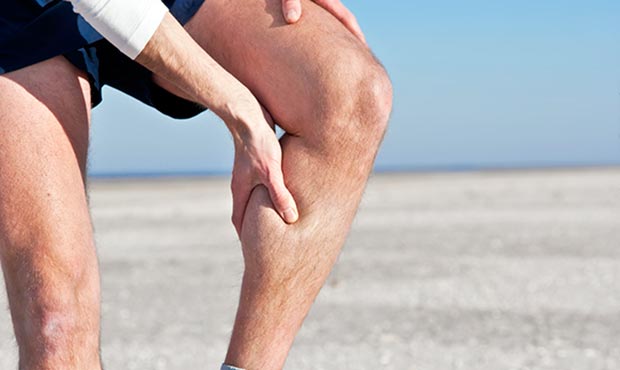
Cramps are involuntary muscle spasms sustained without control and proper relaxation. They occur most often in the legs but can occur in any muscle in the body, although cramps usually affect a group of muscles in the:
- Front of thigh (quadriceps).
- Back of the thigh (hamstrings).
- Calf (calf muscles).
There are several types of cramps depending on the kind of muscle affected and depending on the individual’s underlying condition:
- Nocturnal cramps.
- Smooth muscle cramps
- Skeletal muscle cramps
The skeletal muscles that cramp most frequently are the calves, thighs, and arches of the feet. This type of cramp is associated with strenuous activity and can be very painful, although skeletal cramps can also occur during relaxation.
They are usually associated with a magnesium deficiency in the body. Muscle contraction involves an essential energy substance for the body called ATP. But just as it acts by driving the contraction, its decrease in our body also causes a lack of muscle activation control. Therefore the lack of energy can produce a lack of power in our muscle cells and cause cramps. Usually, muscle spasms occur when a muscle is overloaded or injured.
The exact cause is still unknown, although it is true that certain situations can lead to them:
- Overexertion (overuse of a particular muscle).
- Dehydration.
- Not being in shape.
- Lack of electrolytes (e.g., sodium) in your diet or loss of electrolytes, for example, through sweating.
- Insufficient blood supply to the muscles.
- High temperatures at the time of exercise.
- Poor exercise technique.
Of all these, it is believed that the leading cause would be excessive exertion, either by exercising for longer or with greater intensity. This is why it’s common to get a cramp at the end of prolonged or strenuous activity or after high-intensity exercise.
What can you do to avoid cramps? Muscle cramps exercise treatment includes feeding your muscles.
Magnesium: a 20-gram serving of almonds every day can help us get the magnesium we need for balanced muscle function. About 80% of the population is deficient in magnesium, recommended daily, which is 275 mg for adults. The magnesium intake from the diet could be complemented with a nutritional supplement.
Potassium: foods rich in potassium, such as sweet potatoes, tomatoes, carrots, oranges, melon, kiwi, help the muscles to suffer as little as possible after physical activity, avoiding spasms.
Ginger: improves circulation, which can be very useful to prevent the onset of night cramps. You can take it in juice or infusions: squeeze a couple of lemons, add sweetener to taste, and a little ginger.
Hydrate well. To ensure adequate hydration, it is essential to drink water before you feel thirsty and to drink small amounts of water at set intervals.
To recover appropriately after physical exercise, you can follow this guideline:
Before training: 2 glasses of water During exercise: 1 glass of water every 15 to 20 minutes.
After exercise: drink more water than usual.
Keep moving and stretch gently. We should avoid postures with little movement for long periods. Therefore an active break is the best way to get out of a sedentary lifestyle. When we suffer a cramp, the first thing to do is stretch the muscle gently and steadily.
Caress your muscles. Massage is an effective remedy because it increases circulation and promotes muscle tone. If you suffer from cramps frequently, the deeper musculature must be treated, which requires the care of a physiotherapist or masseur.
